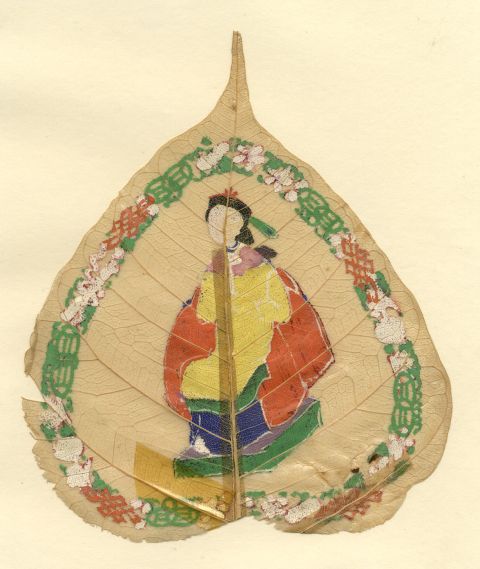This website uses cookies to ensure you get the best experience on our website. Learn more.
Antique 19th-century Chinese Peepal Leaf Painting – Qing Dynasty Empress
Collection: All China
An original 19th-century gouache painting on peepal leaf, Qing Dynasty Empress.
This is a rare and beautifully preserved traditional Chinese painting on the skeleton of a peepal leaf. The peepal tree, otherwise known as sacred fig or Bodhi tree, is native to south-west China, Indochina and the Indian subcontinent. Its leaves form perfect, delicate, transparent skeletons once dried, and as such are uniquely suited to this art form. The skeleton would typically be varnished, before being painted with vivid, backgroundless genre scenes. The resulting paintings were prized by Western travellers and traders who travelled to the Far East in the 19th-century.
The leaf is loose with no paper backing.
All artworks come with a Certificate of Authenticity and—if it is a collection artwork—its accompanying collection text or artist biography.
Details
Signed: No.
Inscribed: No.
Condition: Overall in good condition for its age and delicate nature. There is some age toning, and a small loss at the right edge. There is a historic repair with tape on the verso, lower right. Please see photos for detail.
Presented: Unframed.
All China
This leaf forms part of an exquisite collection of 19th-century Chinese peepal leaf paintings that we have for sale. The peepal tree, otherwise known as sacred fig or Bodhi tree, is native to south-west China, Indochina and the Indian subcontinent. Its leaves form perfect, delicate, transparent skeletons once dried, and as such are uniquely suited to this art form. The skeleton would typically be varnished, before being painting with vivid, backgroundless genre scenes. Like Chinese paintings on pith, paintings on peepal leaves were produced for the export market in the 19th century. These small, lightweight artworks were made for Western merchants and travellers from around 1825 onwards. By 1833 the monopoly of trade by the English East India Company had come to an end, opening the China trade to dozens of British companies and seeing the number of merchants and volume of trade flourish. Paintings were produced in port cities to meet increasingly high Western demands for Chinese souvenirs. Typically paintings on peepal leaves and on pith would depict attractive local subjects such as customs, costumes and trades, and indigenous flora and fauna. The painting style would combine a traditional Chinese approach of flattened sweeps of colour with aspects of Western influence in detail and realism.
View the full collection All China


